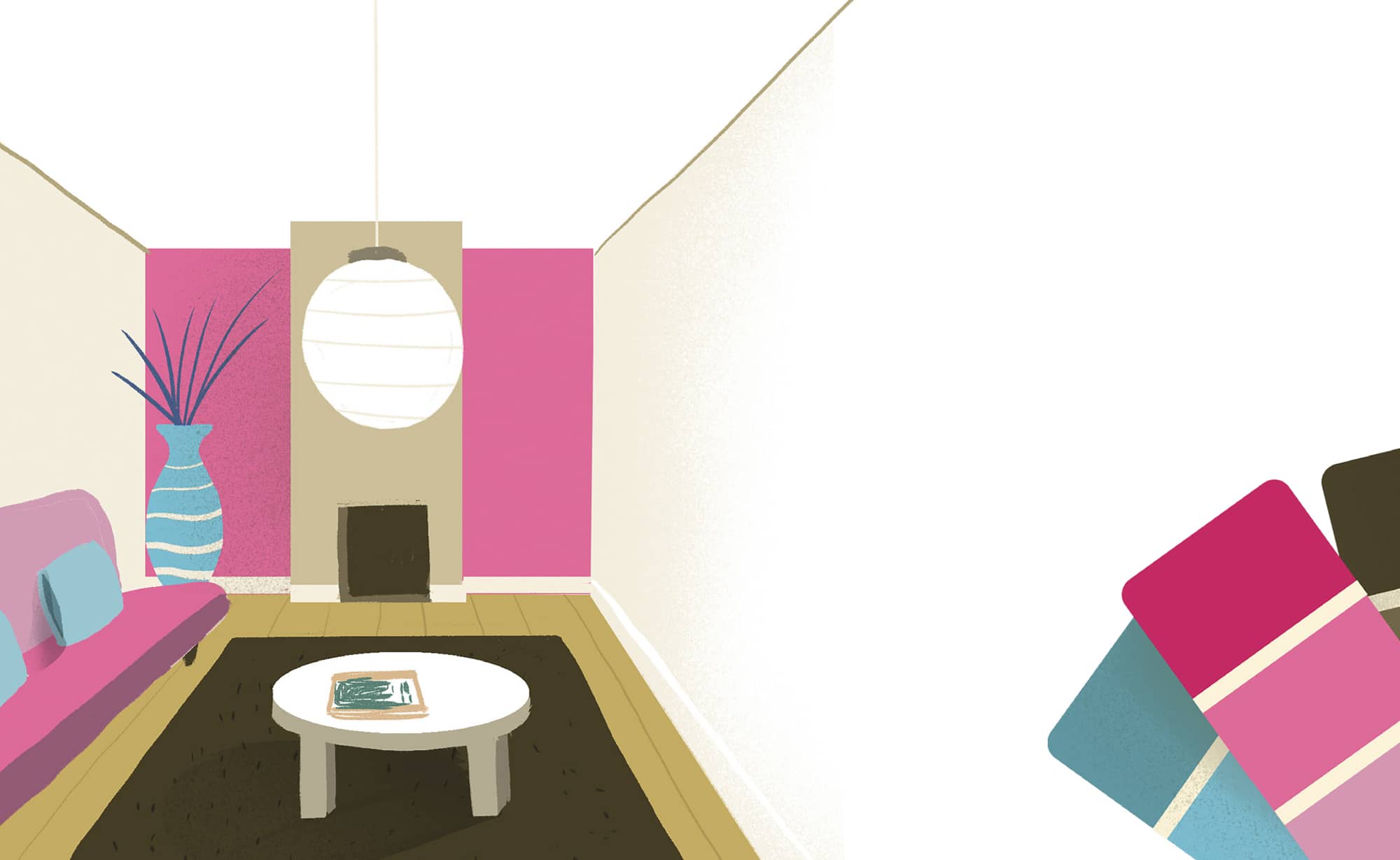Colour
We may not spend much time thinking about how colour affects our moods, but when it comes to deciding on paint colours in our houses, it is a direct reflection of our personalities. When we enter our homes, colour is the first thing that strikes us. Do dark colours make you feel down and claustrophobic, or cosy and safe? Do light tones feel cold, or refreshing? There is no right or wrong with colour, or rules on how it affects us, so we should spend time thinking about what we like and whether we are happy with our current choice. We can exercise control over this; even in rental accommodation, we can source fabrics, bedding and cushions in shades that make us feel calm and comfortable.

THE JOY OF COLOUR
Looking at colour can give us the opportunity to be more mindful. When was the last time you sat down at home and really noticed the colours surrounding you? We see the wall colours, furniture, lighting and fabrics daily, but perhaps fail to actually notice their effect on us. The joy we get from a brightly coloured batik throw, taking us back to a holiday where we purchased it. The warmth we feel from snuggling under a clean, white, fluffy blanket when it’s cold. These are our touchstones.
Colour affects people in many different ways, depending on where they live, the climate and light that surrounds them. As with all trends, colour variations come and go, this is why it is important to choose colour personal to us. We try to make our homes beautiful with colours that reflect our preferences and personalities, which is important, but the key is to discover tones that we truly love, as opposed to those we think we’re supposed to like. How do we blend the colours into a pleasing combination? Or conversely, are we happiest with loud, clashing palettes? Perhaps our favourite combinations are the ones that invite a little bit of creativity and randomness into the home? It’s up to you. Pay attention to how you feel, and it’ll guide you to the right mixture.
FINDING THE IDEAL SCHEME
We naturally associate colours with emotions; when we are sad, we feel blue; when we are angry, we see red; when we’re jealous, we meet the green-eyed monster. It is no great surprise to learn that colour can influence our moods just as it expresses our feelings.
When decorating a minimalist interior, it’s all about creating a clean base. This is a good starting point and can allow you to see a space without embellishment and from there decide where to add the colour. Clean white walls can open up a space, while soft, nature-toned pieces in beiges and green can be more soothing to the eye. Perhaps by sticking to a neutral minimalist palette we can take inspiration from nature and with the addition of lots of green plants, bring the outside in.
Alternatively, you could throw away the interiors rule book and work out what sits right with you. When choosing your paint, get some samples, put them on the walls, sit with the colours you like, and turn your attention inwards. Try to write down a few words that come up when contemplating how colour affects your mood in the home.
Perhaps there isn’t enough comfort gained from the colours around you, and you’re not in the position to take on any major redecoration. This doesn’t mean you’re debarred from a mindfulness-friendly space, though: you don’t need to overhaul everything to adjust your surroundings. The simple act of placing some vibrant flowers on the table or filling a fruit bowl with vivid lemons and limes can perk up a space from the minute you walk into it. Moving a luscious red lamp from the bedroom into the lounge could be just the thing you need to both calm the bedroom and lift the energy. There is no rulebook you have to follow, simply the way that you react when you see it. Take that time to stop and reflect; you may be amazed at how a few quick changes can affect the whole home and the way you feel within it.